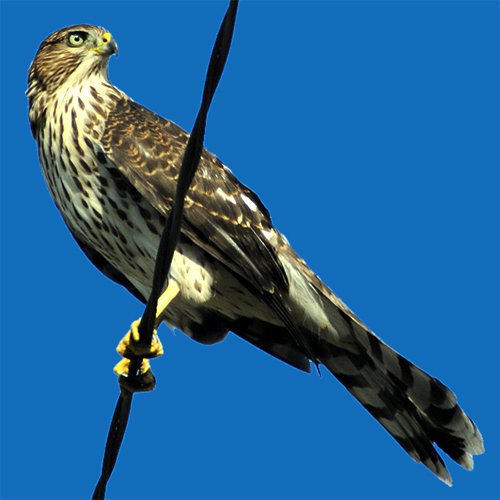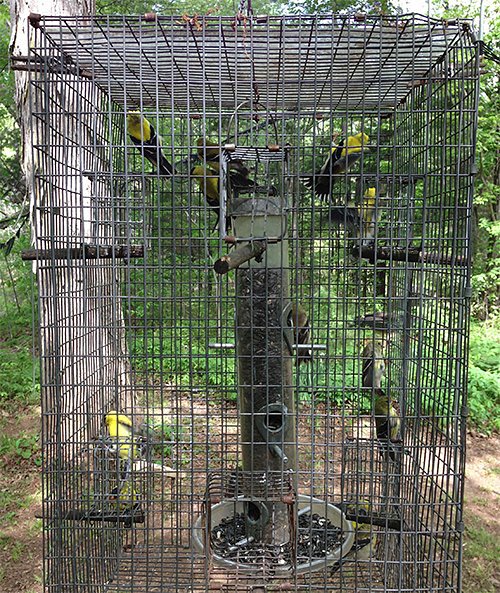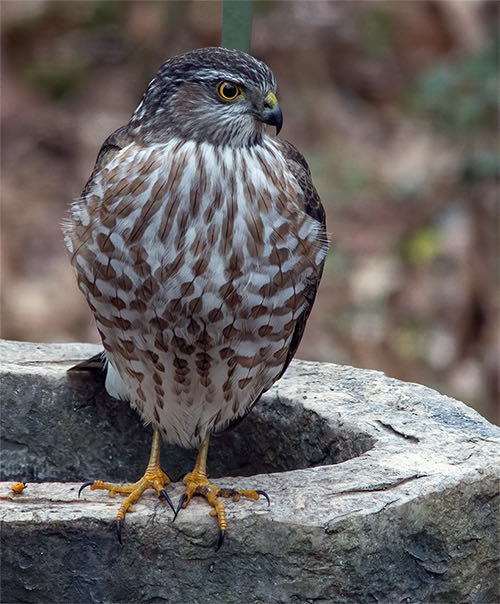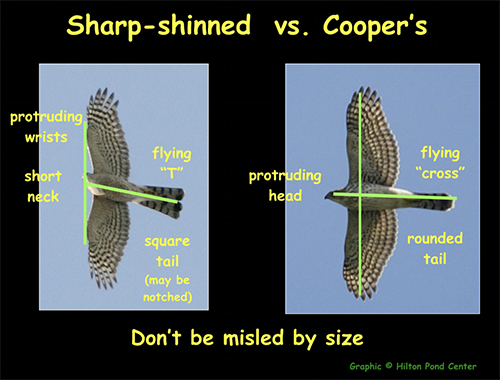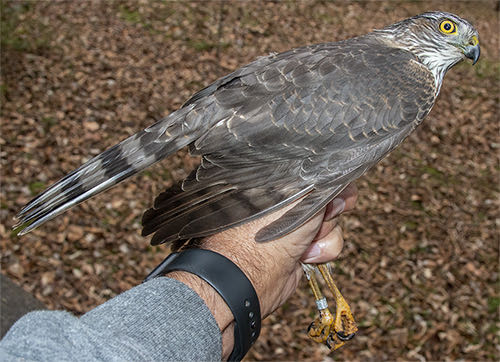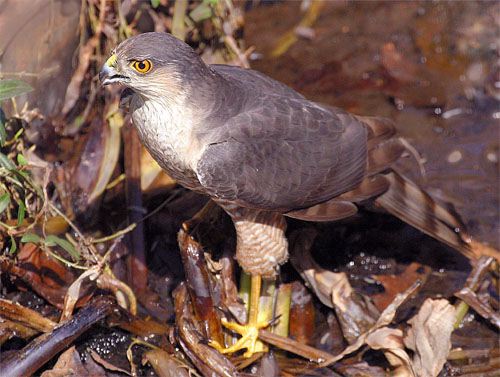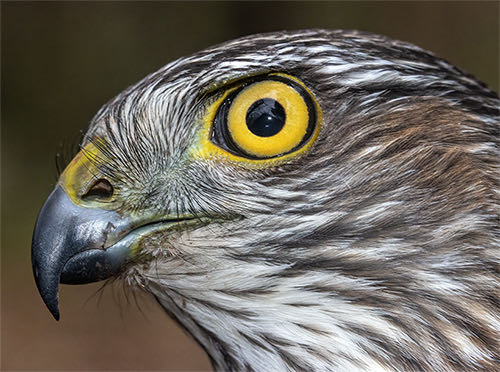- Established 1982 -HOME: www.hiltonpond.org
THIS WEEK at HILTON POND Subscribe for free to our award-winning nature newsletter (Back to Preceding Week; on to Next Week) |
Join Us for the |
|
| WINTER'S HUNGRY HAWKS
When folks find out we're into ornithology, they often ask: "What's your favorite bird?" Well, let's see. Downy Woodpeckers and Carolina Wrens were our "spark species" that got us into watching birds. While in grad school in Minnesota we focused on behavioral ecology of Blue Jays. And for the past 36 years we've grown deeply interested in Ruby-throated Hummingbirds. Nonetheless, we typically reply we have no favorite bird, that all of them from Brown Thrashers to Black Vultures are equally interesting. Along those lines, we also caution people when they pass judgment on various bird species, like how they "hate" Sharp-shinned Hawks because these speedy raptors sometimes prey on songbirds at backyard feeders. Our usual comment is "If you put out sunflower seeds for chickadees, you're really just putting out chickadees for sharp-shins"--after which we congratulate the birdwatcher for the uncommon opportunity to observe sharpies and chickadees in a perfectly performed predator-prey tableau.
All text, maps, charts & photos © Hilton Pond Center Although diurnal raptors are present year-round at Hilton Pond Center, the best time to watch them in action is during winter when hardwood trees are bare and smaller birds are congregating at our feeders. It's then that Sharp-shinned Hawks migrate in from further north and resident Cooper's Hawks and Red-shouldered Hawks start looking for appropriately sized prey at our feeders. Rarely we host an immature Red-tailed Hawk whose attention is focused more on our substantial population of Eastern Gray Squirrels--one of which is being consumed in the photo above. (Migratory Mississippi Kites and Broad-tailed Hawks are on the Center's "Yard List" only because they sometimes circle overhead during breeding months, but we haven't seen an American Kestrel locally in more than 30 years. Osprey is our only other diurnal raptor; they occasionally dive after a fish in Hilton Pond as they fly north or south in spring and fall.) One of our first activities each morning at Hilton Pond Center is to look out the kitchen window of the old farmhouse, checking to see which birds are also early risers. Some days there are no songbirds at all at the feeders, which usually means a predator is present. Sometimes it is an adult Red-shouldered Hawk (RSHA, below), perched in a nearby snag or even on a platform feeder!
All text, maps, charts & photos © Hilton Pond Center RSHA are our most frequently observed raptors at the Center, likely because a pair nests and raises a couple or three young on the property each year. Most days we see one or more perched--or gliding through the trees or across the pond. The adults are permanent residents, with the current year's fledglings remaining through the first winter or dispersing in autumn for points unknown. It's likely the Red-shouldered Hawk in the feeder photo above was waiting for an Eastern Chipmunk to venture forth on its usual mission of cleaning up spilled seeds beneath the feeder. Or it might have been looking for a Green Frog in the small garden pool just below. Chipmunks and frogs are among the red-shouldered's favorite meals, but the hawk undoubtedly would settle for breakfast fillet from a careless Northern Cardinal or Mourning Dove. (Check out those stout toes and talons--to say nothing of the hawk's heavily hooked upper mandible!)
All text, maps, charts & photos © Hilton Pond Center The RSHA in our feeder photo has "adult" plumage; i.e., the breast is marked with horizontal rusty barring rather than the vertical brown streaks of an immature (just above). That said, the "adult" hawk is likely in only its third year--hatched in 2017--because its eye is pinkish-yellow rather than the bright crystalline red characteristic of older, mature Red-shouldered Hawks. Another notable attribute is the hawk's bright yellow cere (below left)--
All text, maps, charts & photos © Hilton Pond Center We banded our first local red-shouldered back in 1993 and have handled a total of 11--one full adult, one sub-adult, and nine hatch-year or second-year individuals. They are a handful and require a Size 6 lock-on band with overlapping flanges (above); with its hooked bill this large hawk can pry open a standard butt band.
As with the Red-shouldered Hawk, adult Cooper's Hawks (right) have rusty horizontal barring on breast and belly. Immatures (below) have dark brown vertical streaking. Observers sometimes confuse large adult female "coops" with red-shouldereds, but the former have slate blue wings and back compared to brown in the RSHA (NOTE: Immature Cooper's also have brown backs.) When feet are visible, the toes, legs, and talons of Cooper's Hawks and other accipiters are much thinner than those in buteos such as the Red-shouldered.
All text, maps, charts & photos © Hilton Pond Center Even though we see Cooper's Hawks fairly often at Hilton Pond, we've banded only three. All were young birds will yellow or grayish-yellow irises; adults generally have red eyes after the second year or so. Two were banded in late fall (October and November) and could have been arriving migrants; the other hit a high mist net in mid-May one year when Ernesto M. Carman was visiting from Costa Rica. Based on measurements we made with a leg gauge, all three Cooper's Hawks required lock-on bands, but in Size 5 (a bit smaller than those needed for a Red-shouldered Hawk).
All text, maps, charts & photos © Hilton Pond Center We didn't deploy mist nets much during early December at Hilton Pond Center, deferring to windy and damp weather that made it unwise to try to snare birds in that way--lest feathers get matted down and hypothermia set in. We did run various traps unless rain was really coming down. Some days we just used two hanging traps, each containing a sunflower seed tube feeder (shown above, with American Goldfinches inside). These two are the most effective of all our traps, and it's not uncommon to quickly catch a dozen or more winter finches at one time as they enter through one-way tunnels. On 9 December the two hanging traps were baited and set, so we checked every few minutes to see if anything had gone in. It was a slow day, but at about 4 p.m. we glanced at the trap just outside the office window of our old farmhouse and noticed three House Finches caught therein. Oddly, they were completely stationary and not fluttering about. A broader view revealed the reason: A small hawk was perched a few feet away on an outdoor water fountain, so the finches were apparently in freeze mode.
All text, maps, charts & photos © Hilton Pond Center Grabbing our ever-ready SLR camera with telephoto lens, we slowly moved into position for a shot through the window and got the image above. Such stealthiness was unnecessary, however, for when we opened the sliding glass door for another photo the little hawk just sat there and stared back. As we walked onto the deck, the hawk suddenly flew at the trap and attempted to get at the finches, so we spooked it away and brought the smaller birds in for banding. Meanwhile, the hawk perched on a tree limb about 20 feet from the trap, perhaps wondering where its prospective lunch had gone.
All text, maps, charts & photos © Hilton Pond Center A large hawk this was not. With a body not much bigger than the palm of one's hand--Blue Jay size--its skinny legs and long thin toes armed with sharp talons indicated it was another accipiter, either a Sharp-shinned Hawk (SSHA) or Cooper's Hawk (COHA). These two species--adapted for preying on smaller birds--are often difficult to differentiate in the field, although SSHA generally have squared tails while the COHA tail is usually rounded. (CAVEAT: This is not a 100% reliable characteristic. See our copyrighted graphic above for other identification hints.) Of the two species, "coops" are somewhat larger than "sharpies," but this difference falls apart when we learn male sharp-shins are relatively small, female SSHA are about the same size as male COHA, and female COHA are the largest of all.
All text, maps, charts & photos © Hilton Pond Center To make a long story shorter, we managed to capture the little hawk using a bal-chatri trap covered with monofilament nooses that snared the raptor's toes. In-hand, a short wing chord measurement (193mm) told us it had to be a Sharp-shinned Hawk, and wing plus tail measure (165mm) showed it was a longer-tailed female sharpie.
All text, maps, charts & photos © Hilton Pond Center More-or-less brownish vertical streaking on her breast and a streaked crown indicated she was immature; older SSHA (just above) typically have that horizontal rusty-red barring and dark bluish crowns and backs just like a Cooper's Hawk. Again, our young hatch-year sharpie had yellow irises (below) that should darken as she ages and likely will turn crystalline red.
All text, maps, charts & photos © Hilton Pond Center This individual on 9 December 2020 was the 40th SSHA captured at Hilton Pond since 1982--our most commonly banded raptor--but the first in a long while (7 December 2001). Of those, 78% were banded in autumn or early winter, suggesting they were southbound migrants. Upon banding and release this week's little Sharp-shinned Hawk high-tailed it across the pond, after which we figured it was safe to let go the three newly banded House Finches. Even so, we wager more than one of the Center's dickey-birds will end up in the crop of a hungry and efficient winter raptor. All text, maps, charts & photos © Hilton Pond Center
Checks also can be sent to Hilton Pond Center at: All contributions are tax-deductible on your Don't forget to scroll down for Nature Notes & Photos, |
|---|
|
"This Week at Hilton Pond" is written and photographed by Bill Hilton Jr., executive director of Hilton Pond Center for Piedmont Natural History
|
|
|
Please refer "This Week at Hilton Pond" to others by clicking on this button: |
|

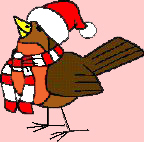
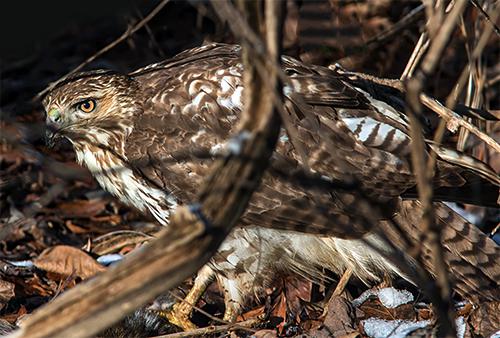
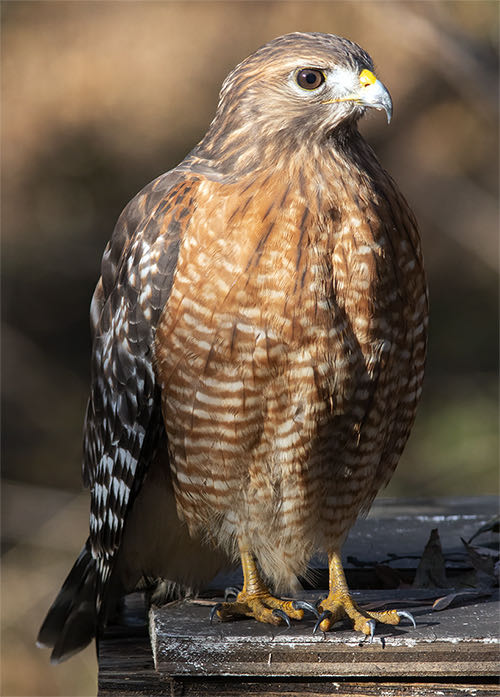
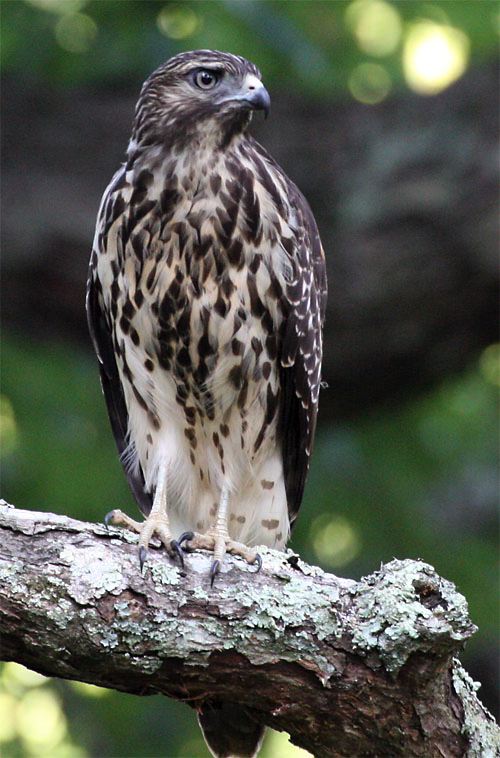
 the relatively soft area surrounding the nostrils at the base of the upper mandible. The true function of the cere is a bit of a mystery. Some ornithologists claim it extends the length of the nostril and thus protects it from penetration by struggling prey items. A better explanation may have been discovered by a researcher who demonstrated the cere "emits" ultraviolet light that may be visible to other hawks
the relatively soft area surrounding the nostrils at the base of the upper mandible. The true function of the cere is a bit of a mystery. Some ornithologists claim it extends the length of the nostril and thus protects it from penetration by struggling prey items. A better explanation may have been discovered by a researcher who demonstrated the cere "emits" ultraviolet light that may be visible to other hawks 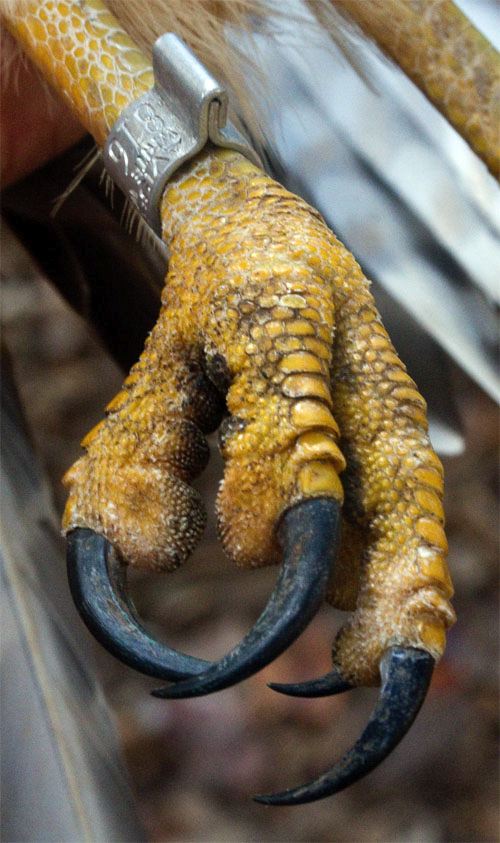
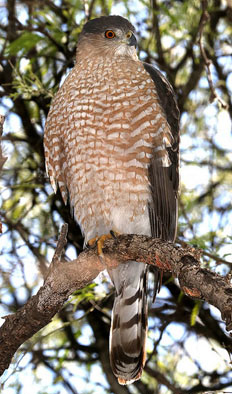 Our second most commonly observed winter raptor at
Our second most commonly observed winter raptor at 